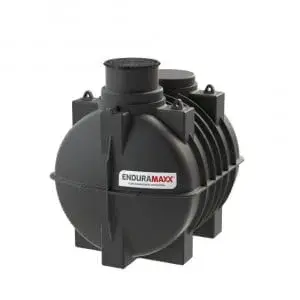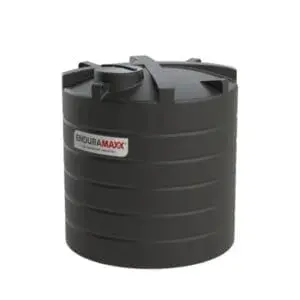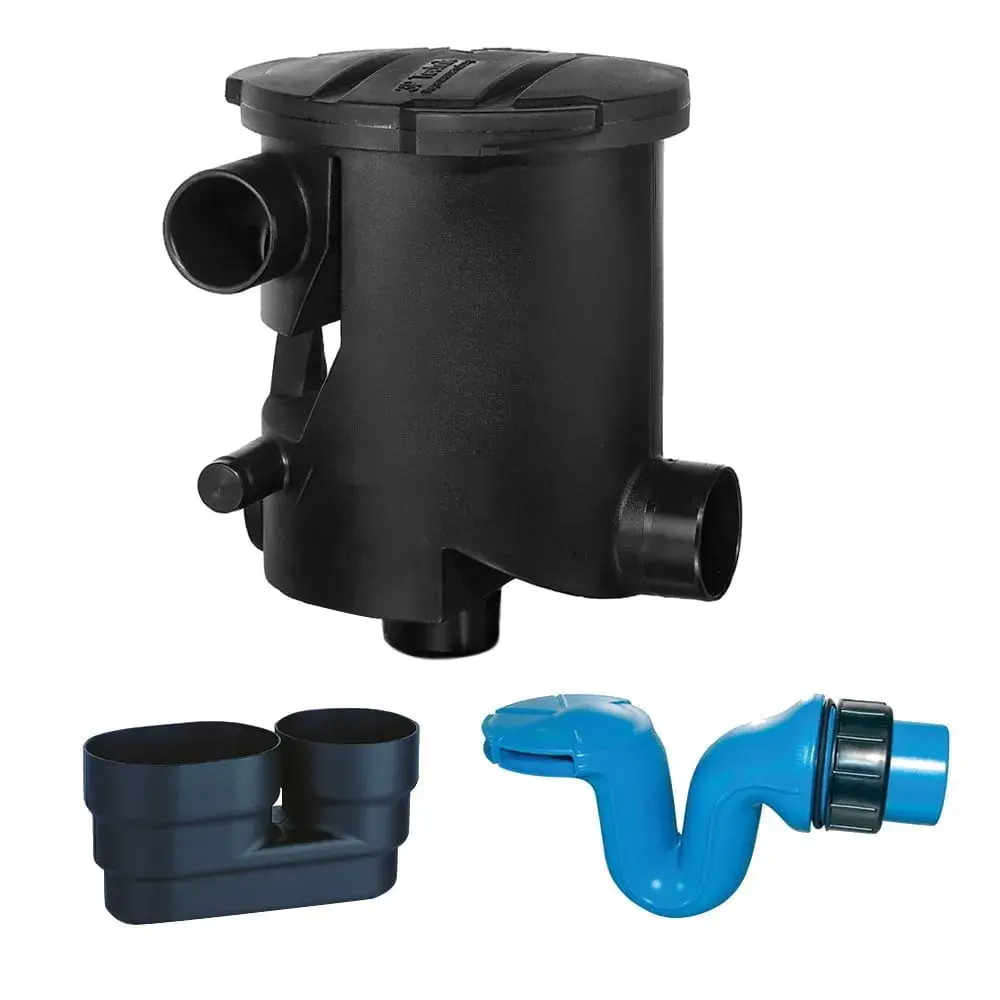Water is a necessity of life for any living creature. Water supports a number of functions in all living creatures, including helping to regulate body temperature, aiding the digestive system, improving waste excretion, and playing an essential role in tissue growth and renewal. Even mild dehydration can have a significant effect on people and animals alike.
When it comes to any type of animal rearing, it’s difficult to overstate the importance of water, and pig and poultry farming is no different. While it’s easy to focus on the role of feed in achieving optimal growth and productivity in pigs and poultry, water is actually the most vital part of their diet. Water Storage Requirements for Pig and Poultry are generally as follows;
Watering Requirements For Pigs
Pigs are heavily reliant on water. It’s not surprising given that piglets are around 80 percent water, while a market-ready pig contains around 50 percent. The specific water needs of a pig varies by age, activity level, and temperature, but range from half a gallon for piglets, to six gallons for lactating sows. Low water consumption has a number of observable effects and can lead to a range of problems in pigs, such as poorer feed conversion, reduced weight gain, reduced milk production, and lower weaning weight. These all have an impact on productivity and profitability.
Experts state that pig pens should contain a minimum of one nipple waterer per ten pigs, although two per pen is recommended, ensuring that there’s always a back-up should one become blocked or damaged. Studies have shown that pigs have preferred drinking times, so a strong enough flow is necessary to ensure that every pig has access to water throughout the day, even at peak times. This is even more important in hot weather, as just 10 percent dehydration can be fatal to pigs. Location of the nipple waterers is also an important aspect in ensuring that pigs drink enough. They should be no more than two metres from the feeders and set at an appropriate height for the size of the pigs.
Watering Requirements For Poultry
Successful poultry farming is also heavily reliant on water. Poultry typically consume twice as much water as feed, but this can increase by to four times as much in hot weather. In cool weather, consumption is likely to be around half a litre a day per bird and can rise to as much as a litre in hot weather, with fast-growing meat birds consuming the most. Inadequate hydration in poultry can lead to decreased productivity, lower weight gain, stress, and feather loss, again impacting profitability.
The guidance for water provision for poultry is the same as for pigs. There should be at least one nipple waterer provided per ten birds, set at an appropriate height and with suitable water flow to ensure maximum consumption.
Ensuring The Water Supply
Interruptions to mains water supplies can happen. Whether it’s bad weather, damage to the pipes, or wear and tear, sometimes the water supply simply won’t be available. Livestock’s need for water, however, doesn’t change just because there’s a water shortage. It’s vital that farmers ensure that they can deal with any such interruptions and should put measures in place so that there is always enough water in reserve to provide at least 24 hours of hydration. This is where Enduratank’s Fluid Category 5 Break Tanks come into play.
Enduramaxx’s Fluid Category 5 Break Tanks offer pig and poultry farmers the perfect solution for storing water hygienically and safely for their livestock. All Enduratank’s Break Tanks are approved for use for storing potable water under Regulation 31 and are fully Drinking Water Inspectorate (DWI) approved, in line with the Water Supply (Water Fittings) Regulations 1999.

Enduramaxx's standard range of Break Tanks ranges from 500 litres to 30,000 litres, with all sizes available in both vertical and horizontal options. Other sizes can be manufactured at the customer’s request, and insulated jackets can be fitted at the time of manufacture to ensure that the water is kept at optimum temperature.
Safe Water
Water Storage Requirements for Pig and Poultry Quality of drinking water is just as important as quantity. Only water that farmers themselves would be prepared to drink should be supplied to livestock. As well as carrying out visual checks to ensure that the water is clean and fresh, farmers also need to check regularly that it’s free of antigens and bacteria. It’s recommended that water be taken from the nipple waterers to be tested at least twice a year for safety.
The best way to ensure that the water remains safe for consumption is by using a safe and effective disinfectant, such as chlorine dioxide. As well as reducing bacteria and antigens, it also reduces the need for antibiotic use, saving money and improving production for greater profitability. Chlorine dioxide also has the benefit of being tasteless and odourless, which means that livestock are happy to consume the treated water.
Chemical Dosing Tanks For Chlorine Dioxide
Enduramaxx’s Chemical Dosing Tanks come in six sizes and are specifically designed for use within the water treatment and purification industry and for chemical dosing and storage applications. These plastic tanks are rotationally moulded using mid-density polyethene (MDPE) for added strength and durability. Tanks can be supplied with an outer bund for additional security and environmental protection as an optional extra.

Our dosing tanks are all fully DWI approved and meet the specific requirements of Regulation 31.
When considering Water Storage Requirements for Pig and Poultry there is the Drinking Water Inspectorate (DWI) which operates under the umbrella of the UK Government’s DEFRA (Department for Environmental, Food and Rural Affairs) states that; “Protection of public health of consumers through safeguarding the quality of drinking water is a key aspect of the drinking water quality regulatory framework” Regulation 31 ensures that water suppliers, when producing and distributing drinking water, only use products and substances that do not cause any detrimental effects on the safety or quality of the drinking water.
For more information on water storage tanks for pig and poultry or to talk to one of our sales team, call 01778 562810.

Posts By Topics
- Blog (303)
- Chemical Storage Tanks (118)
- Chemical Dosing Tanks (114)
- Chemical Tanks (114)
- Water Tanks (58)
- Rainwater Harvesting Tanks (43)
- Vertical Rainwater Tanks (31)
- Vertical Storage Tanks (31)
- Cone Bottom Tanks (19)
- Conical Cone Tanks (18)
- Rainwater Harvesting (17)
- Water Bowsers (15)
- Horizontal Tanks (14)
- Potable Water Tanks (13)
- Farming (9)
- Case Studies (8)
- Industrial Storage Tanks (7)
- Liquid Fertilser Storage Tanks (6)
- WRAS Approved Potable Tanks (6)
- Wine and Beer Production (6)
- Horizontal Transport Tanks (5)
- Microbrewery (5)
- Rainwater (5)
- Category 5 Break Tanks (4)
- Cider Production (4)
- Mixer Tanks (4)
- Molasses Tanks (4)
- Polyethylene tanks (4)
- Rainwater Filter Kits (4)
- SPECIALIST & BESPOKE TANKS (4)
- Bunded Tanks (3)
- Slimline Tanks (3)
- WRAS Approved (3)
- Clarification Tanks (2)
- Crosslinked Polymer Tanks (XLPE) (2)
- Fertiliser Tanks (2)
- Sump Tanks (2)
- Tank Installation (2)
- Water Butt (2)
- underground water tanks (2)
- ACCESSORIES & FITTINGS (1)
- ATV & UTV SPRAYING UNITS (1)
- Above Ground Effluent Tanks (1)
- Bespoke Tank Frames (1)
- Category 5 Turret (1)
- Caustic Soda Tanks (1)
- Closed Top Bunded Tanks (1)
- Craft beer (1)
- Effluent Tanks (1)
- Enduramaxx (1)
- Ferric Chloride Tanks (1)
- Fire Safety Regulations (1)
- Fire Sprinkler Water Storage Tanks (1)
- Industrial Water Tank (1)
- Open Top Bunded Tanks (1)
- Open Top Cone Tanks (1)
- Open Top Vertical Tanks (1)
- Polyethylene Potable Water Tanks (1)
- Polyvinylidene Fluoride (PVDF) Tanks (1)
- Polyvinylidene Fluoride Tanks (PVDF) (1)
- Pressure Washers (1)
- Pro Series Spot Sprayers (1)
- RWH (1)
- Sodium Hydroxide Storage Tanks (1)
- Sprayer Fill-up Tanks (1)
- Uncategorised (1)
- liquid fertiliser tank (1)
Sign up to the newsletter
enduramaxx.marketing
Related Posts
Poultry Watering
With water making up 80% of blood and being vital for the regulation of body temperature and organ...
Can Water Storage Tanks be Buried? Underground Tank Options
Can Water Storage Tanks be Buried? This is a question often asked and the answer is Yes! However, a...
What Are The Water Requirements For Poultry, Chickens & Broilers?
What are the water requirements for poultry? Chickens are living, sentient beings, totally...
Related Products
From £1,080.00 inc. VAT
£900.00 exc. VAT
From £1,344.00 inc. VAT
£1,120.00 exc. VAT
From £768.00 inc. VAT
£640.00 exc. VAT
£480.00 inc. VAT
£400.00 exc. VAT





